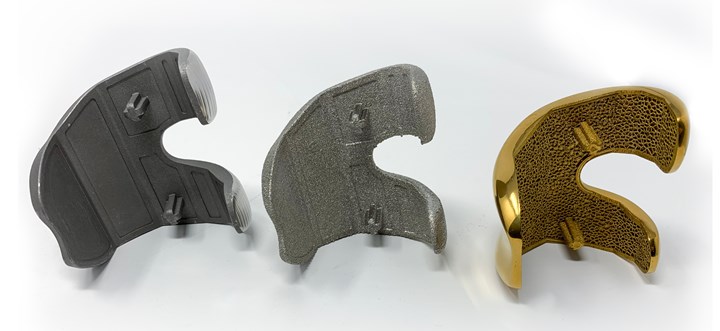Additive manufacturing (AM) has been used to make medical implants for more than a decade now. 3D printing technology has allowed implant manufacturers to create complex geometries that copy the shape and function of natural bone, and to produce these items on an accelerated timeline. But additive manufacturing’s role in the medical field continues to develop and mature.
.
In a recent issue of Additive Manufacturing magazine, we highlighted a number of 3D printed implant applications, ranging from devices used in successful, completed surgeries to research that will influence the next generation of medical devices. Our reporting shows that 3D printing is not just an alternative method for manufacturing hip cups and spine cages at scale; it is actually reshaping what implants can do, and how patients can be treated. Here are four ways that 3D printing is changing medical implants: Accelerating product development. 3D printing allows for the creation of new kinds of geometries, such as trabecular lattices to encourage bone in-growth on a given implant. The technology offers not only the capability to create and test these geometries, but to prototype them using the intended manufacturing process and to do so quickly. When the right design is […]
Case Study: How PepsiCo achieved 96% cost savings on tooling with 3D Printing Technology
Above: PepsiCo food, snack, and beverage product line-up/Source: PepsiCo PepsiCo turned to tooling with 3D printing...






























0 Comments